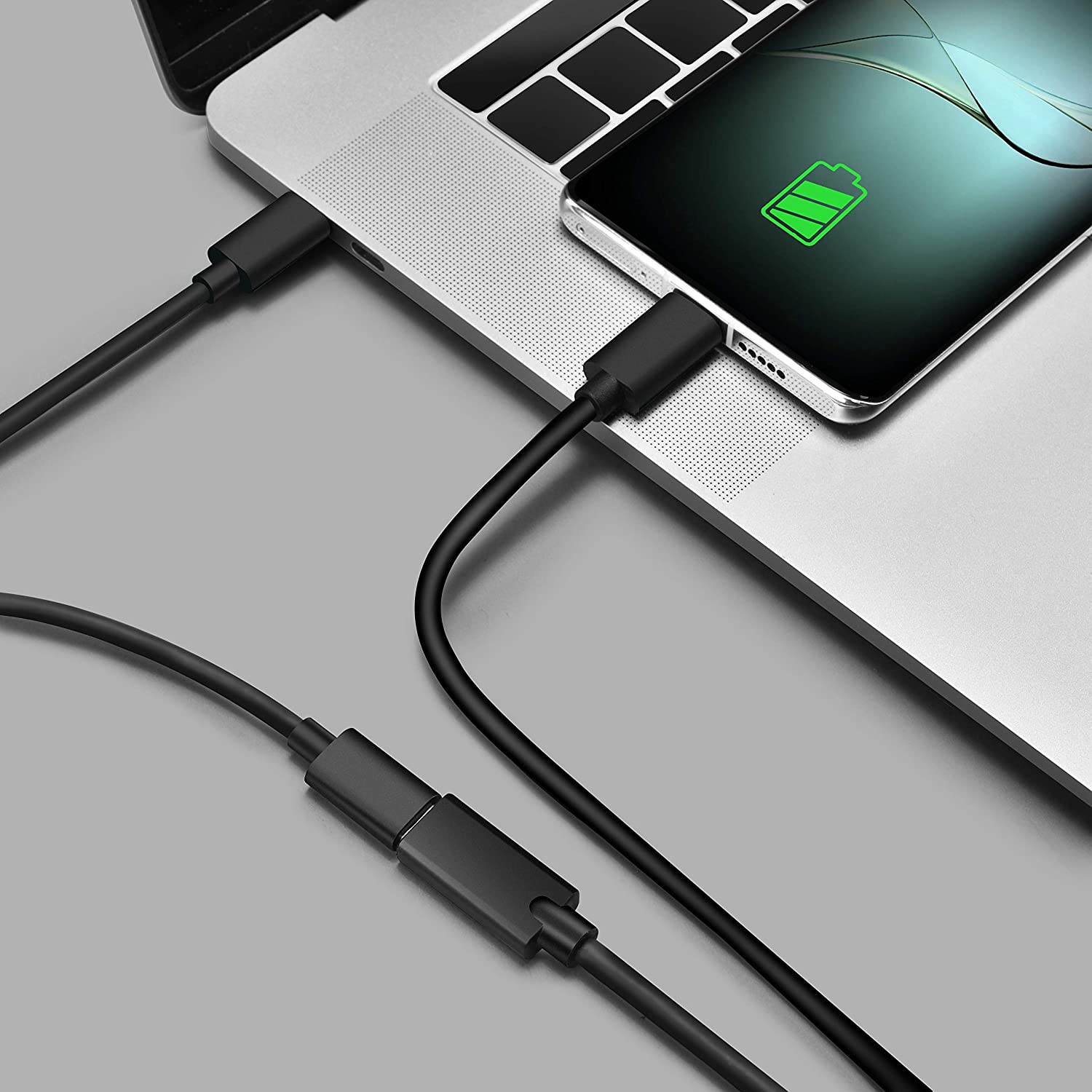Table of Contents
USB, the universal way to connect devices using cables, has long been used in a variety of modern appliances that includes PSVR. However, there has been a massive shift in the use of USB in present-day devices that are worth acknowledging as regular PC users.
You might have noticed the awkward transition to the use of USB Type-C ports in most devices produced by manufacturers today. The change has seen the emergence of dongles used to bridge the physical incompatibility issues users face using old devices and annoyingly short cables that come with the particular devices.
Although most electronic devices still feature the standard USB Type-A port, this still doesn’t suffice the need to get the perks that come with higher-performing cable options out there. Hence it goes without saying that micro USB extension cables are a separate key component you’ll need to get for this need.
Whether you are looking to transfer data between your devices or connecting peripheral devices that are not compatible, you will probably have to get a micro USB extension cable. This guide provides you with an in-depth understanding of making a sound purchase while choosing the best micro USB extension cable for your needs in the market today.
What Is a Micro USB Extension Cable?
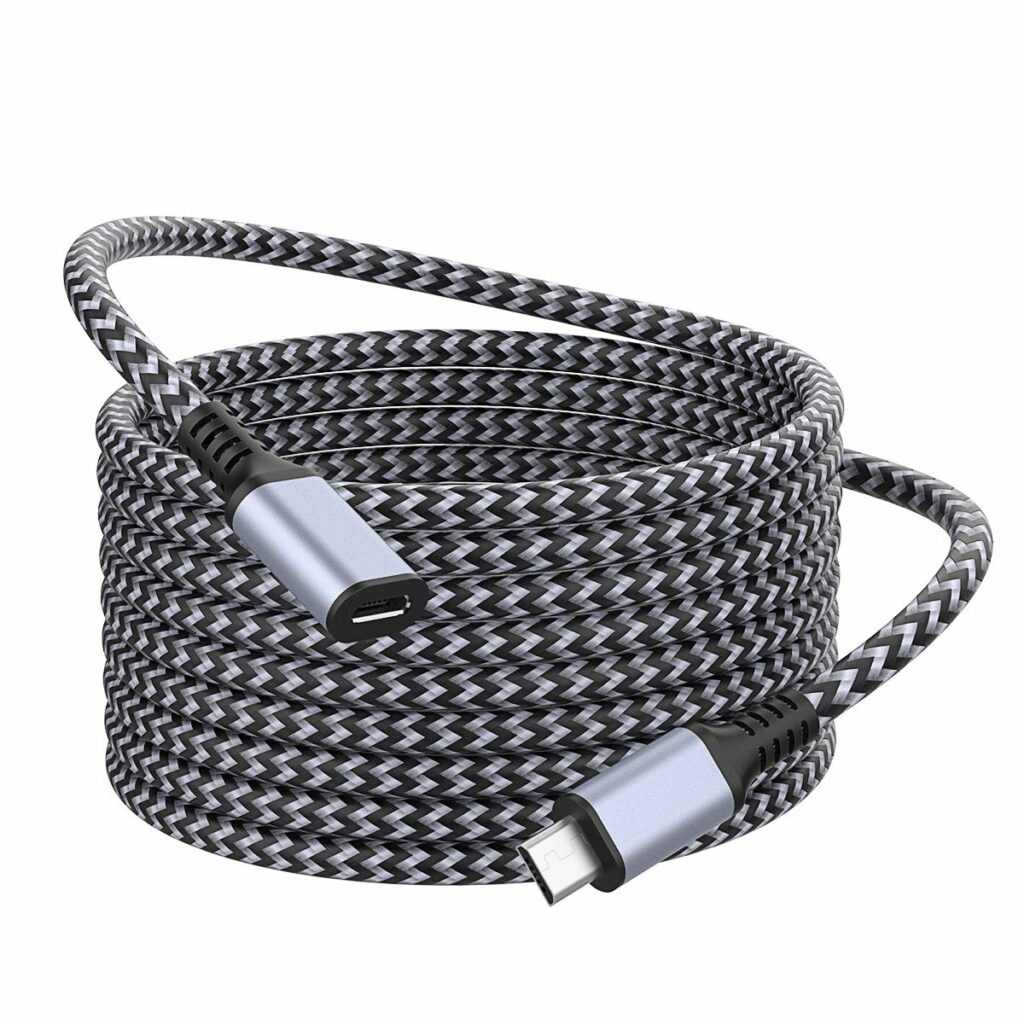
A micro USB extension cable is a connector cable fitted with a male micro USB and corresponding female USB for compatibility and physical extension purposes.
Male to female micro USB extension cables are most commonly used to install security cameras, power codes for gaming console controllers, and code extension for smartphone and tablet chargers.
They are your go-to cables when continuous charging of devices is a requirement. Judging by the fact that they are plug-and-play devices, or better known as “On-The-Go” devices, makes them even more desirable as no configuration is necessary.
Micro USB Extension Cable Generations and Types
Let’s look at the various Micro USB Cable generations:
Generations
Before establishing which type of micro USB extension cable you’d like to purchase, you should understand the generations and features offered by each. Among the earliest versions was the USB 1.0 and USB 1.1. Other generations present in the market include USB 2.0, USB 3.0, and USB 3.1.
USB 1.0 and USB 1.1
They generally are outdated, and you might want to avoid them for data transfer. In addition, clocking transfer speeds of 12 Mbps rank them the slowest compared to their successors. They are, however, suitable for powering small devices such as wireless speakers and are cheap for this reason.
USB 2.0
They are the most common type used today since they are relatively faster. USB 2.0 cables can reach up to 480 Mbps, so they are frequently used as data cables.
USB 3.0 and 3.1
These are the most convenient and the true definition of ideal USB data cables. They can transfer data at an impressive 5 Gbps, making them the most suitable to use for telecommunication purposes. Connector sizes are more extensive as they are compatible with both Type-A and Type-B standards.
One feature that makes USB very convenient is that they exhibit backward compatibility, meaning that you can identify interchangeably different generations from different ports available to you. However, it is impossible to differentiate between different generations by visual inspection; therefore, you must carefully look through the product description for the generation that fits your needs.
Types Of Micro USB Extension Cables
There are different types of micro USB cables available today. Unlike the generation, the types of USB cables can be distinguished by their physical features, making it easy for you to choose the right one. They include:
- Micro USB Type-A
- Micro USB Type-B
- Micro USB Type-C
Micro USB Type-A
The Type-A cables come with a female receptor and a male connector. They can be easily identified by the white receptacle and the compact 5-pin design. Most Type-B ports are compatible with Type-A connectors, making them a great choice if you are seeking compatibility..
Micro USB Type-B
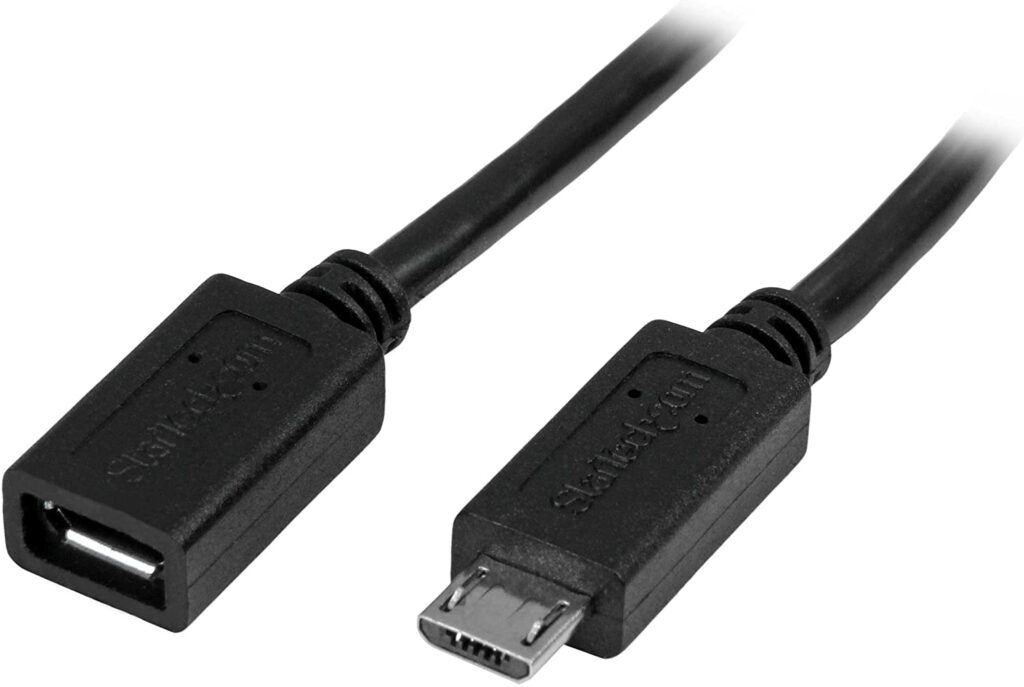
They have become the industry standard for most smartphones, tablets, and electronic gadgets. There is no generation difference between the USB 1.1 and the USB 2.1 for the Type-B cables. They have a 5-pin male connector head design and are famous for their black receptacle.
Micro USB Type-C
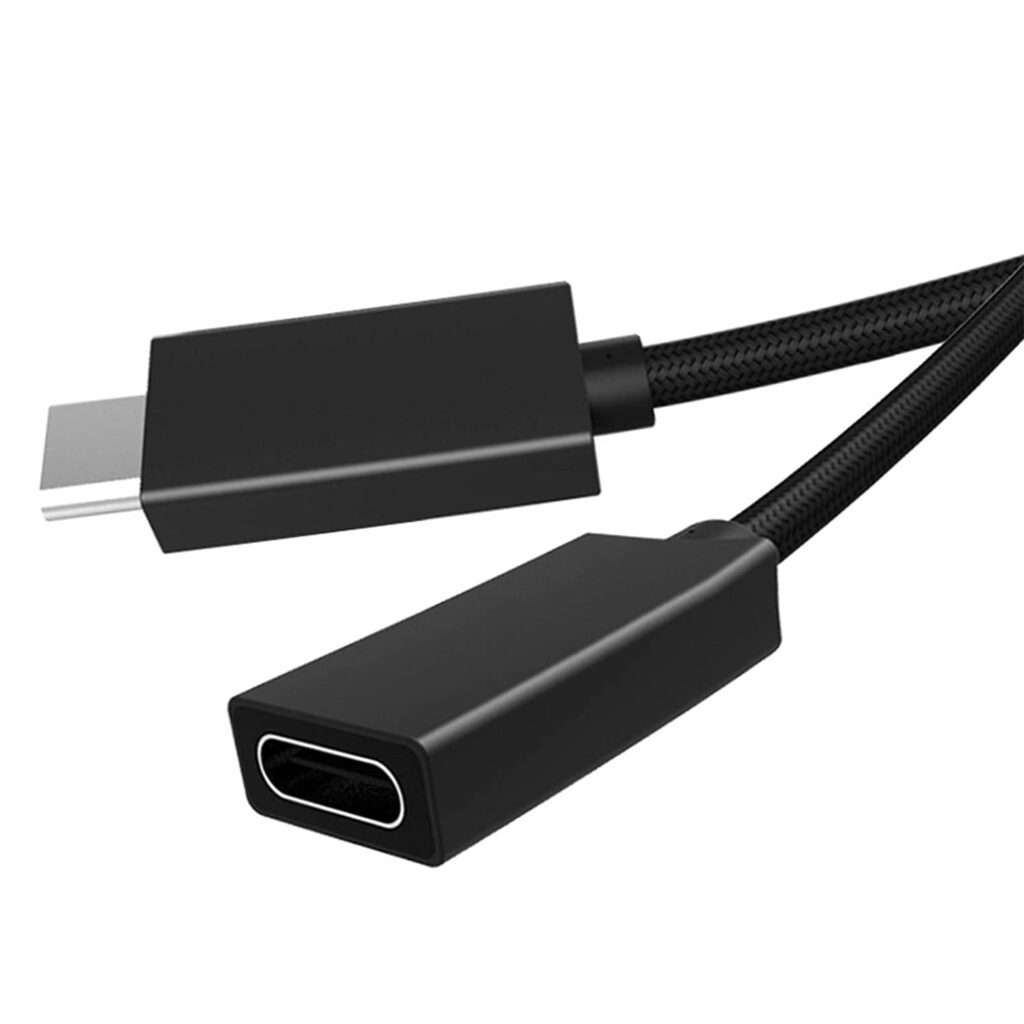
Physically, the Type-C cable male connector is slightly larger than the standard Type-B male connector. They offer easy plugging as you don’t have to flip to the proper orientation before inserting to the female receptacle. They can support the coveted USB 3.1, which is capable of delivering lightning-fast data transfer speeds.
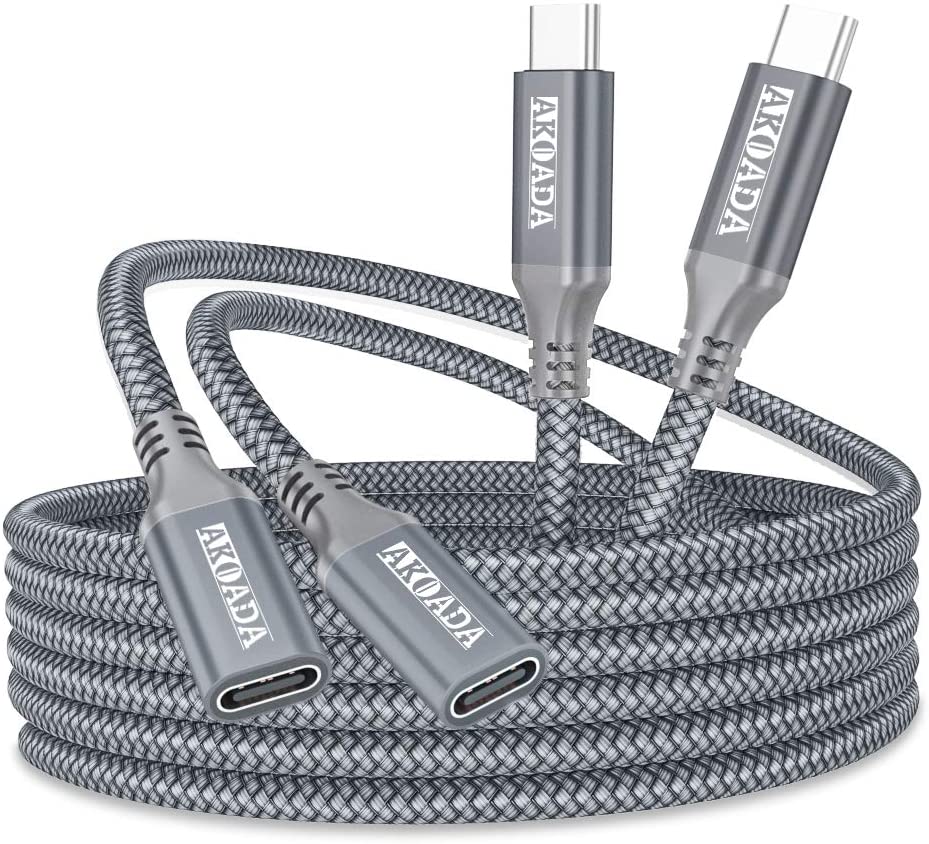
Unlike the USB 2.0 that only delivers up to 2.5W of power to charge small devices, USB Type-C with 3.0 standards can deliver up to 100W of power. This feature makes it convenient for charging larger devices like laptops. If this is what you’re after, you might want to get the Type-C micro USB extension cable.
Another benefit of buying this cable is that most companies, including Apple, Dell, HP, and Samsung, have adopted this technology, slimming the chances of it becoming that obscure cable that is used for a limited set of devices.
Best Micro USB Extension Cables
Depending on the application area, various properties that have to be met tend to provide the essential foundation for selecting the best micro USB extension cable. Ranging from power application to data transfer, the following is a summary for choosing the best cable.
Low Power Devices
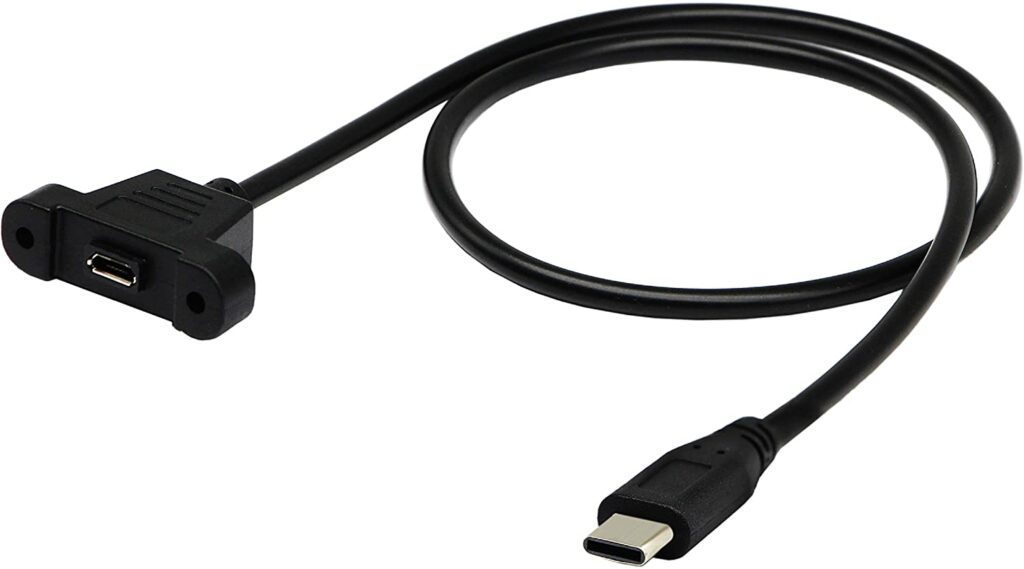
They mainly require low power for charging. The recommended extension cable is a Type-A or B cable with 2.0 standards for more reserved performance. Some manufacturers offer a Type-C extension cable with 2.0 standards for smartphones and tablets.
High Power Devices
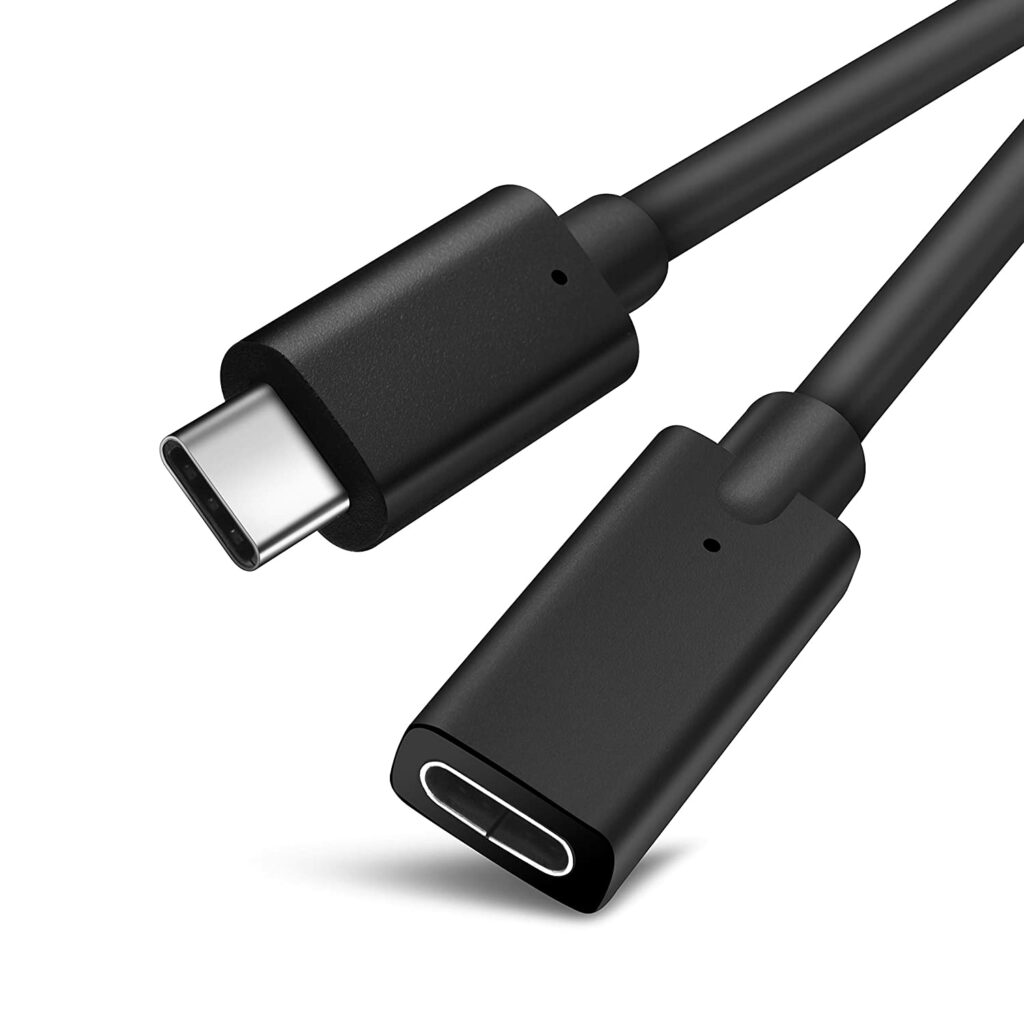
Such devices frequently include large electronic mobile devices like laptops and CCTV switch stations. Consider USB Type-C with higher capability like the USB 3.0 or 3.1 for superior power delivery.
Data Transfer
When intending to use the cable for data transfer, any cable offering 3.0 standards upwards is a perfect recommendation. These are common for transmitting large volumes of data in telecommunications and transferring real-time data in low-power CCTV circuits in homes.
Conclusion
Micro USB extension cables are essential when dealing with device connections. You, therefore, need to be equipped with basic knowledge on the types of cables, the various available standards, and which combination offers the desired operating conditions to meet your needs.

